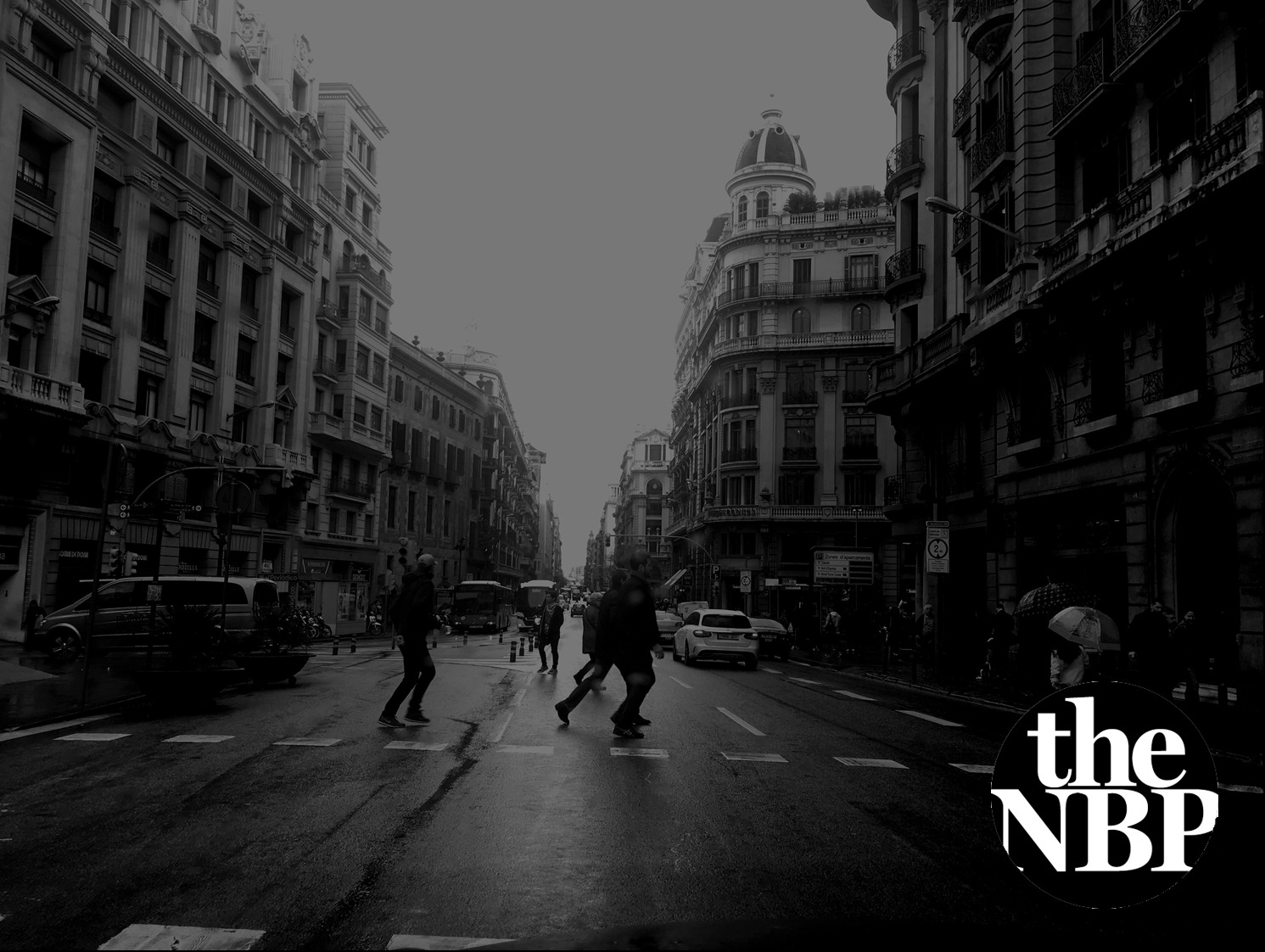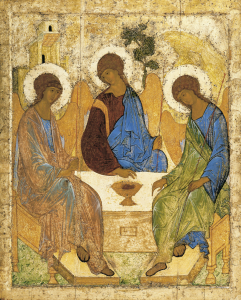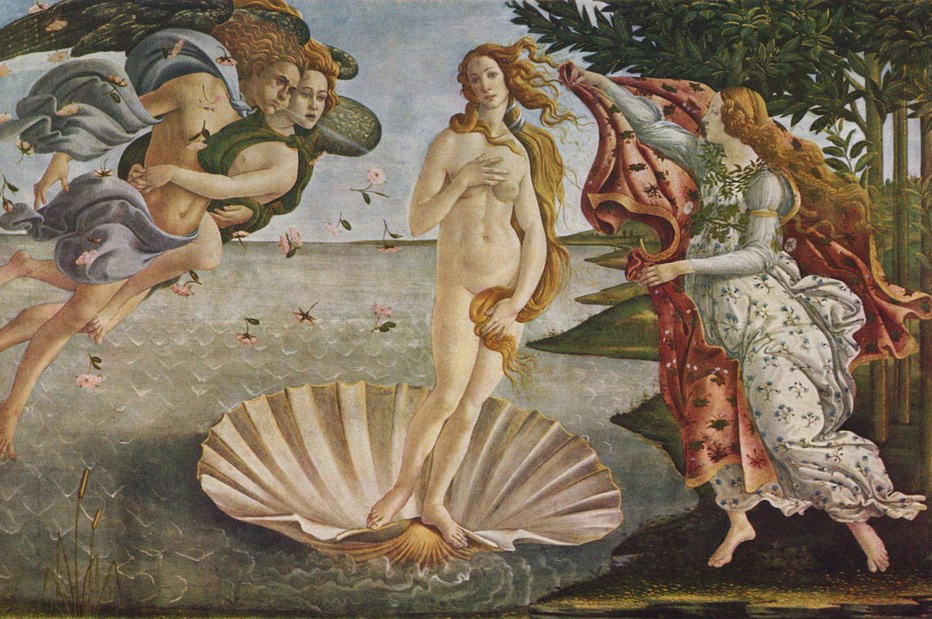Beyond the Winter of culture, from the icon to ’collage’, the art of painting gives the eye further scope, in the imaginary museum that brings together conscience, sensuality and symbolic life. Ten pictures highlight the continuity of painting in a culmination of mystery, wisdom of colour and dialectic between classic and modern


1
The Trinity
ANDRÉI RUBLIOV: 1410 APROX.
Tretyakov Gallery, Moscow
The highest achievement in icon painting, The Trinity has a unique force. Rubliov deals with this topic following the Christian-Orthodox tradition: three angels symbolize the mystery of the unity between Father, Son and Holy Spirit. The artist resorts to antiperspective to avoid any theatralizations. As a consequence, the spectator is drawn towards the circular movement of the city, and when the contemplation is quiet, it surrenders to being swallowed by the spiritual whirlwind he is challenged with.


2
The birth of Venus
SANDRO BOTTICELLI: 1483
Uffizi Gallery, Florence
Venus appears, nude, as if she were the center of the universe, while the winds bathe her with roses. Botticelli, enthusiastic follower of the humanistic tenets, turns his Aphrodite –Venus– into Urania, emerging fully-grown from the sea, which has fertilized Uranus’ severed genitals: beauty arises from violence and prevails over violence. The Renaissance rediscovery of classical antiquity is embodied in a woman that Botticelli presents as the synthesis between sensuousness and wisdom.
3
The last supper
LEONARDO DA VINCI: 1495-1497
Santa Maria delle Grazie, Milan
Since painting is, always, a break in time, The last supper is the grand finale of the crucial moment. Leonardo is reproducing the moment immediately after Christ announced that there was a betrayer among his apostles. In an attempt to capture this moment, he gives the evangelical scene a dramatically innovative outlook, and sets up four choral groups. Insurmountable masterpiece as regards construction of perspective, the last supper transforms itself into a motionless dance dominated by a tense and powerful balance.
4
The School of Athens
RAFAEL SANZIO: 1511
Vatican Museums, Rome
We could consider it as the visual manifesto of Humanism. In this work, Rafael seeks to express the union between nature and spirit, as well as close communication between the ancient and the modern. Framed in an architectural design genuinely Renaissance, Plato, pointing to heaven, and Aristotle, to the ground, preside over the Assembly of Wisdom. The harmony of the set is extraordinary: the embodiment of an ideal.
5
Melencholia I
ALBRECHT DURERO: 1514
National Galery of Karlsrhue, Germany
The iconography of melancholy dates back to the Egyptians: man or woman with the head resting on his/her hand. This enigmatic and disturbing spiritual state was associated, since the Renaissance, to creative talent. Durer succeeds in grasping it in his engraving on the topic with a unique perfection. A mosaic of fascinating and disturbing elements. The dog, the magic square, the truncated rhombohedron, the sphere. And, dominating the scene, avid and unsatisfied the winged lady, the angel of melancholy.
6
The last judgment
MIGUEL ÁNGEL BUONARROTI: 1537-1541
Sistine Chapel, Rome
Three decades after painting The Genesis, Michelangelo completes his masterpiece in the Sistine Chapel on painting The Last Judgment. The work is considered as the greatest turning point towards Baroque. Extreme drama presides over the greatest grand finale of human bodies ever painted. The deluge of bodies reveals the power of Christ in all His majesty and sacrificial radicalism of the self-portrait of the artist in the body of Saint Bartholomew.
7
David with head of Goliat
MICHELANGELO MERISI DA CARAVAGGIO: 1610
Borghese Gallery, Rome
Reputedly, the artist’s last painting, and, supposedly, self-portrait in Goliath’s face, represents the great turn brought by Caravaggio on European painting. Darkness shrouds the pictorial space and light reverts its Renaissance style, stops shining from the outside and glows from inside the skin. The bodies get burned in a white fire until they achieve an unprecedented dramatic intensity.
8
Las Meninas
DIEGO DE VELÁZQUEZ: 1656
Museo del Prado, Madrid
It represents the zenith of Velazquez’s talent, Las Meninas is the ultimate analysis of the act of painting. The picture is, simultaneously, a development of the Baroque motive evoked by the artist in his studio, a group portrait and a self-portrait of the painter himself. Above all, this masterpiece is a self-portrait of painting itself, an analysis of its essence and a magnetic game of mirrors in which the spectator feels inevitably caught.
9
Card players
PAUL CÉZANNE: 1656
Musée d’Orsay, Paris
Last painting of a series of five pivoting around the same theme, Cézanne reaches the quintessence of his aesthetic conception: the predominance of form, extreme language economy, geometric foundation of space, continuity of chromatic display. The latest version of Card players is a synthesis of classicism and modernity, as well as a precursor of avant-gardes that worshipped Cézanne as their ultimate point of reference.
10
Guernica
PABLO PICASSO: 1937
Museo Reina Sofía, Madrid
In this large format masterpiece, painted exclusively in black and white, and a wide range of grey shades, Picasso brings the cubist revolution to its highest level of development. The tradition of the “disaster of war”, initiated by Goya, gives way to this violent, airtight painting with abundant symbolisms. Its content transcends the historical moment that triggered its conception, and acquires, through a tragic throb, a universal category.
Música clásica sobre la arena de la playa en dos citas con las batutas de…
The first session of the cycle on the regatta organized by 'The New Barcelona Post'…
The hospital's managing director, Manel del Castillo, and the pharmaceutical company's director in Spain, Leticia…
Generalitat y Ayuntamiento impulsarán dos equipamientos de 'Casa de les Lletres' con un proyecto literario…
Leticia Beleta, director of Alexion Pharmaceuticals in Spain and Portugal, will talk to Dr. Manel…
We all have a friend who never leaves the Gràcia neighborhood. Well, I'll tell you……